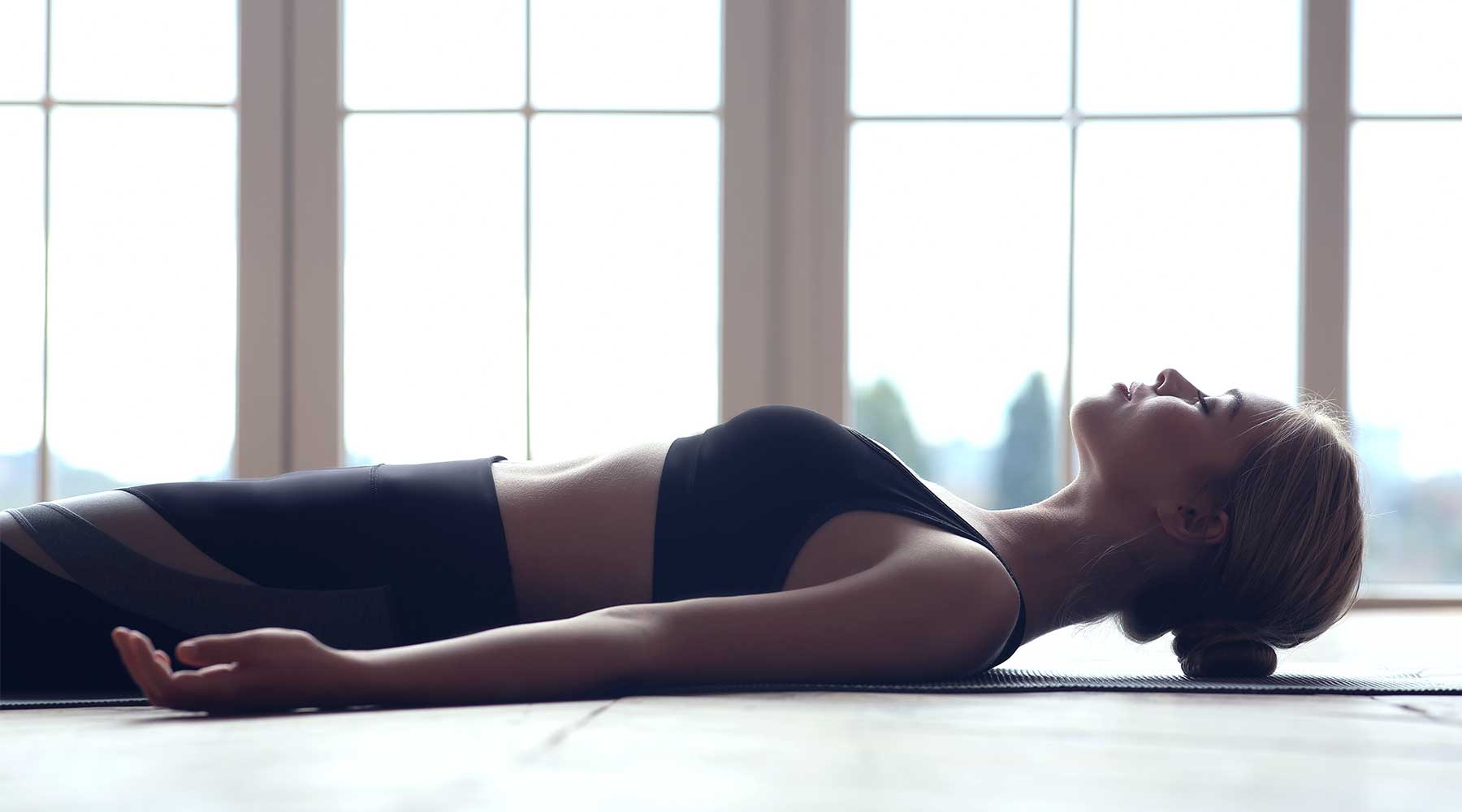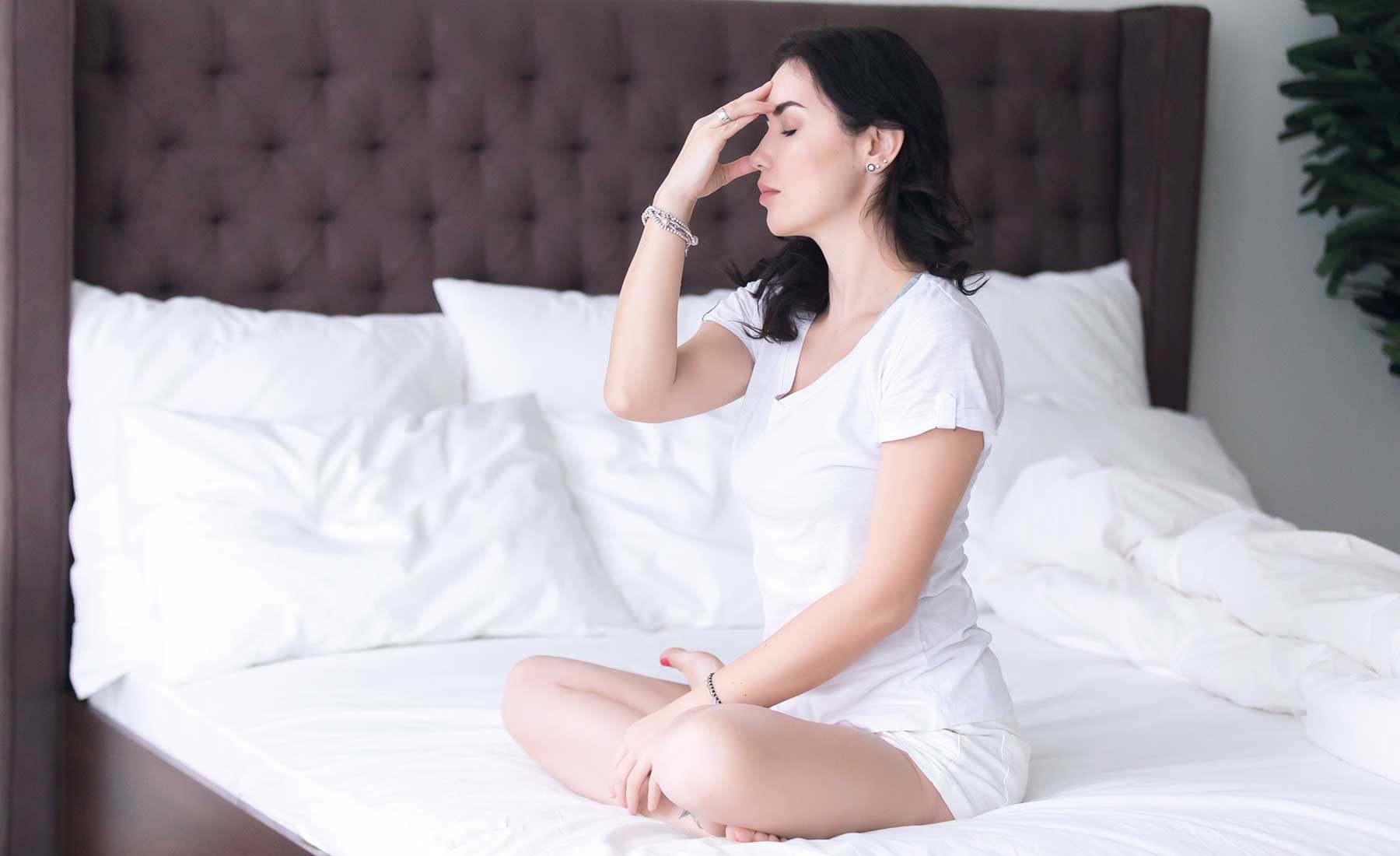
The progressive muscle relaxation (PMR) before sleep
Relax and fall asleep better! Progressive muscle relaxation is a well-known relaxation method for relieving stress and tension. Learn how progressive muscle relaxation works and why it can help improve sleep here.
Table of contents
- Relaxation before sleep
- What is progressive muscle relaxation?
- Positive effects of progressive muscle relaxation
- How does progressive muscle relaxation work?
- Instructions for a short PMR exercise sequence
- Conclusion
1. Relaxation before sleep
stress is ubiquitous in today's society, but in the long run, it not only harms our well-being and health, but also negatively impacts our sleep. Persistent stress and a lack of relaxation before bedtime can make it difficult to fall asleep and stay asleep, thus preventing us from resting sufficiently at night.
Therefore, it is very important that our body and mind shut down in the evening and sufficient relaxation find.
2. What is progressive muscle relaxation?
Progressive muscle relaxation (PMR) is a special relaxation technique that uses targeted muscle tension and relaxation to help relieve physical and mental stress. This relaxation technique was developed by the American physician Edmund Jacobson. He discovered that mental state in case of stress or anxiety with a high muscle tension could be related and conversely, loosening the muscles leads to relaxation and a feeling of calm.
Jacobson subsequently developed the special method of progressive muscle relaxation as a method for calming and stress management. This involves selectively tensing different muscle groups one after the other and then relaxing them for a while. This transfers the relaxation from muscle group to muscle group, triggering further relaxation processes throughout the body. This also calms breathing, lowers blood pressure and heart rate, and reduces bowel activity. The method also has a positive effect on the nervous system and helps improve one's body awareness. In this way, stress-related tension can be released, psychological excitement can be dampened, and chronic pain can be alleviated. This, in turn, allows us to better prepare for rest at night and enjoy a restful sleep.
But be careful: Depending on your health or emotional state, muscle relaxation can also intensify negative sensations. If you experience pain, inner restlessness, or discomfort, you should reduce the intensity of the tension, avoid painful areas, or discontinue the exercise. Pay attention to your own feelings and, if necessary, seek advice from a therapist or doctor.
3. Positive effects of progressive muscle relaxation
Possible effects on the body
- Relieves muscular and nervous tension
- Improves blood circulation
- Calms blood pressure, heart rate and breathing
- Improves body awareness & body perception
- Promotes relaxation and sleep
Possible effect on the soul/psyche
- Reduces feelings of stress and tension
- Reduces sensitivity and promotes calmness
- Can lead to feelings of heaviness or lightness of the body and feelings of timelessness
4.How does progressive muscle relaxation work?

PMR can be performed while sitting or lying down and should ideally be practiced regularly for optimal effectiveness and rapid application even in situations of acute anxiety or stress. You can learn the PMR sequence yourself in a course. The therapist or instructor will read the instructions aloud. You can also listen to the instructions at home using a CD or video and practice progressive muscle relaxation. There are shorter and longer exercise sequences, lasting up to 30 minutes.
5. Instructions for a short exercise sequence in PMR
Our sample instructions are a short exercise that can be quickly and easily tried out in everyday life. You can find an audio file in which I read these instructions aloud in our
How it works
Sit or lie down in a relaxed position and assume the most comfortable position possible. Wear loose clothing, remove any distracting items like glasses or belts, and ensure you have enough room to move. A comfortable room temperature and lighting, as well as closing your eyes during the exercise, can help you focus your attention entirely inward and on your own perception.
Instructions for reading aloud
Lie or sit comfortably, resting your arms loosely at your sides or placing your hands on your thighs. Close your eyes and fully prepare yourself to relax. Feel the solid ground beneath you and concentrate entirely on yourself and the sensations.
Arms – Now focus your attention on your right and left arms. Clench your hands into fists and bend your arm. Now tense your hands, forearms, and upper arms. Notice the tension and feel the strength of your muscles. (5 seconds of tension). Now relax your arms, open your hands and place them quietly next to your body.
Face - Now tense your entire face. Frown, draw your eyebrows together, and tense your jaw. (5 seconds of tension)Now relax your face and try to completely loosen each muscle. Feel how your forehead, cheeks, and jaw feel.
Neck – Lift your head forward onto your chest and tense your neck muscles (5 seconds of tension)Slowly lower your head back and notice how your neck relaxes. How does it feel? Does your head rest heavily on the floor, or does it feel light?
Shoulders – Now pull the shoulders up towards the ears and hold them there (5 seconds of tension)Let your shoulders sink again, relax them and let go of the tension completely.
Belly - Now concentrate on the core of your body, tighten your abdominal muscles and ensure tension in the abdomen and lumbar area (5 seconds of tension)Release the tension, feel inside yourself. Feel your chest, your stomach, your belly relax again.
Legs - Now tense your glutes and thigh muscles, pull your buttocks together, stretch yourself out and stretch your feet and toes out wide (5 seconds of tension)Gently lower your legs back down and completely release the tension. Consciously notice where your body is resting and feel your lower legs, thighs, and buttocks, all the way down to your back, relax again. Breathe in deeply and exhale very slowly.Feel the tension in your body slowly dissipate. Pay attention to your sensations and thoughts. How does it feel? Let your thoughts drift, enjoy the relaxation, and take in the moment within itself, within you.
(Pause)
When you're ready, slowly return to this space, to the here and now. Move your hands and arms, bring some movement back into your legs, and feel your body slowly activating. Open your eyes when you're ready and slowly stand upright again.
6. Conclusion
-
Progressive muscle relaxation or muscle relaxation is a simple relaxation method against mental stress, anxiety and tension and promotes relaxation and falling asleep.
-
In progressive muscle relaxation, different muscle groups are tensed and relaxed one after the other to promote deep relaxation in body and mind.
-
There are short and long sequences of progressive muscle relaxation exercises that can be practiced regularly.
Best wishes and see you soon!



Leave a comment
This site is protected by hCaptcha and the hCaptcha Privacy Policy and Terms of Service apply.